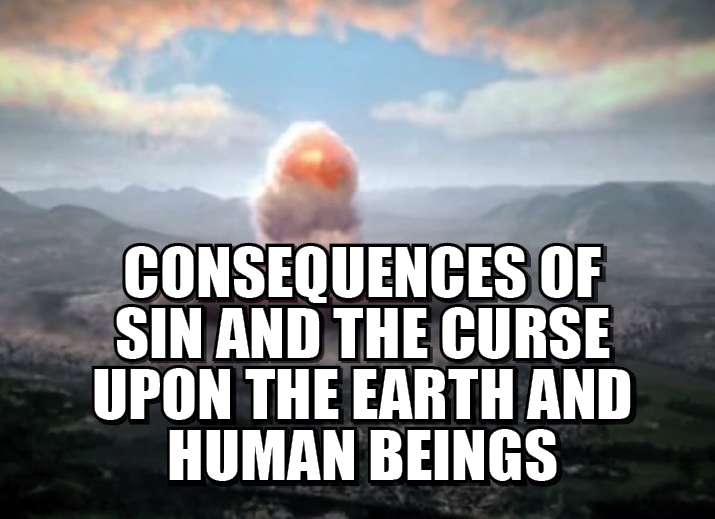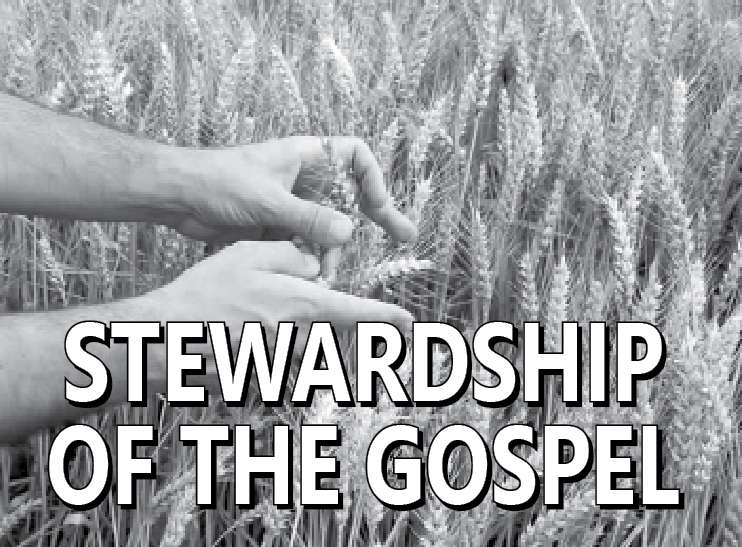
THE FEAST OF PENTECOST
Pr. Thomas Cherian
The feast of Pentecost is also called the Feast of Weeks.
Introduction
A festival is a special occasion of celebration. It is an integral part of every community across the world and observed for various reasons. Israel’s festivals however were communal, comme-morative, theological and typological. They were communal in that they drew the nation together for celebration and worship as they recalled the common origin and experiences of the people. They were commemorative in that they kept alive the story of what God had done in the exodus and during the sojourn. They were theological in that the observance of the festivals presented the participants with lessons on the reality of sin, judgment, and forgiveness, on the need for thanksgiving to God, and on the importance of trusting God rather than hoarding possessions. They were typological in that they anticipated a greater fulfillment of the symbolism of the feasts. It is not surprising that each of the major feasts is in some way alluded to in the New Testament. In the following article we will be looking at the various meanings of the Feast of Pentecost in the Old Testament and their implications in the New Testament.
Word Meaning
The word Pentecost in English is derived from the Latin word ‘Pent cost’, which is borrowed from the Greek word ‘pent kost’ which in turn means fiftieth (day).
Pentecost in the Bible is actually an important Jewish and Christian feast although there are seven (perhaps, eventually eight), feasts which are considered as holy days and are celebrated in the following seasons; spring, summer, and fall. Among the seven feasts that are celebrated ‘Pentecost’ lists as the fourth (Lev.23). It was celebrated during the early summer time in the month of Sivan (month of May). The Jewish feast of Pentecost, is also called as ‘Shavuot’, in Hebrew language means ‘The Feast of Weeks’. This is one among the three pilgrimage festivals that are celebrated at the closing of the spring grain harvest, which began formally in Passover, fifty days prior.
In the Bible there are numerous references with various meanings which can be attached to this festival.
- Ex.23:16: This is known as The Feast of Harvest which marks the end of the wheat harvest. In the kibbutzim, it marks the peak of the new grain harvest and the ripening of the first fruits, including the seven species mentioned in the Bible (wheat, barley, grapes, figs, pomegranates, olives and dates).
- Ex. 34:22: It is termed as The Feast of Weeks. It was observed the day after seven weeks, after the start of the corn (actually barley) harvest (Deut.16:10). It was later known as Pentecost because Pentecost means fiftieth (Leviticus 23:16).
- Num.28:26: Refers to it as a A Holy Convocation. It was a day of offering sacrifices; not just a holiday but a holy day.
- In the later Judaism this festival was used to commemorate the giving of the Law based on Exodus chapter 19 and 20. Yahweh’s Torah (Law) was given from Mt Sinai on the fiftieth day, after the deliverance from Egypt. Although this meaning is not mentioned in the Scriptures the Rabbinic scholars particularly in the mid-12th century AD began to look at Pentecost as a memorial to the giving of the law at Mt Sinai and the birth of their national existence.
- In ecclesiastical calendars Pentecost is the seventh Sunday after Easter and closes Eastertide. New converts in the ancient times in the western countries were baptized on this day. From the white garments of these converts comes Whitsunday, an English name for Pentecost.
The Proceedings During the Festival
The Pentecost was the Jewish harvest, and the people were especially exhorted to rejoice before Yahweh with their families, their servants, the Levite within their gates, the stranger, the fatherless, and the widow, in the place chosen by Yahweh for His Name, as they brought a free-will offering of their land to Yahweh (Deut. 16:10,11).
The great feature of this celebration was the presentation of the two loaves, made from the first fruits of the wheat harvest. Along with the loaves, two lambs were offered as a peace offering, waved before Yahweh, and given to the priests; the loaves being leavened, could not be offered on the altar. The other sacrifices offered were a burnt offering of a young bullock, two rams, seven lambs, a meat and a drink offering, and a young goat for a sin offering (Lev. 23:18, 19). Until the Pentecostal loaves were offered, the produce of the harvest could not be eaten.
The whole ceremony was the completion of the dedication of the harvest to Yahweh as its Giver, to whom both the land and the people were holy, which began by the offering of the wave-sheaf at the Passover. In the Exodus, the people were offered to Yahweh as being first fruits; at Mt Sinai their consecration to Him as a nation was completed.
Customs and Traditions Related
Many traditions accompany this feast. Since originally it was the last of the spring feasts, after the crop was harvested, a portion was brought to Jerusalem and offered along with special sacrifices of thanksgiving at the Temple. The Feast of the Harvest was enriched (Deut. 16:12ff) to include a sharing of what they had, in keeping with the commands of the Torah, to feed the stranger, orphan, widow and other poor and unfortunate people within the redeemed community. Milk dishes are customary foods, symbolizing the Torah which is likened to milk, according to an allegorical interpretation of the Song of Songs. In synagogues, it is customary to read the book of Ruth whose setting also takes place in spring and at harvest time. Ruth was the ancestor of King David, and according to the Talmud, David was born and died on Shavuot.
The pilgrims spent the night before Shavuot in prayer and study so as to be prepared spiritually for the commemoration of the giving of the Torah. The Cabalists, students of Jewish mystical literature, who were the first to introduce this practice, argued that on Mount Sinai, thunder and lightning kept the children of Israel awake during the time Moses was on the mountain awaiting to receive the Torah. Besides, the giving of the Torah the ceremony of the wedding of the freed community (Israel) with their God was expected, and so the bride should be engaged in preparing her ornaments the previous night. Another reason for staying awake in vigil is that sleep is the “taste” of death while Sabbath is a “taste” of life. Hence the pilgrim should stay awake all night and immerse oneself in the study of Torah because it breathes life into Man.
Throughout Jewish history, it has been customary to engage in all-night study of the Torah on the first evening of Shavuot. Children were encouraged to memorize Scripture and rewarded with treats. Traditional Jews still light candles and recite blessings, adorn their homes and synagogues with greenery, eat dairy foods, study the Torah, read the book of Ruth and attend Shavuot services. The tradition of decorating with greenery on Shavuot represents the harvest and the Torah’s reference as the “tree of life”.
Pentecost in the New Testament
In the New Testament, Christians commemorate the Pentecost as the day of the descent of the Holy Spirit on the disciples of Jesus, occurring on the Jewish Pentecost, after Jesus’ death, resurrection, and ascension. This was known as Christian Pentecost. The disciples began to speak in many languages of the people assembled there, a sign that the disciples should spread the Christian message throughout the world.
This day is understood to be the Day of New Things. Lot of new things have happened or started happening on this day. Following are a few of the significant new things.
1. A Day of New Covenant
The Day of Pentecost in 30 A.D. was an extremely significant event in the plan of God. On this Pentecost, a new and better covenant was established with the children of the Father’s New Creation and rest of the human race. In addition to the enactment of a new covenant, many prophecies reached their partial or total fulfillment on this day (Joel 2:28; cf. Acts 2:16).
2. Day of a New Dispensation
With Pentecost the dispensation of grace had begun (Eph. 2: 8, 9). It marked a shift of emphasis from works to faith and a great change in God’s dealings with man. Now, the gentiles who had been “far off” were made partakers of God’s favor, by the blood of Christ (Eph. 2:13).
This is also known as the dispensation of the Holy Ghost. The power and anointing of the Spirit, which had rested only upon selected Old Testament individuals called to a particular service, for a set time was now available to all believers (Acts 2:39).
3. The Birth Day of a New Institution
Jesus had said, “I will build my church” (Matthew 16:18), and Pentecost marked the founding of that institution. With the Spirit’s outpouring and the conversion of 3,000 souls, the Church was inaugurated and set in motion.
4. Commissioning with a New Power
Power which was given to the New Testament Church was not only to maintain holiness but also to witness with confidence (Acts 1:8). The disciples were weak, quarrelsome, and intolerant before the Spirit came upon them at Pentecost. (Luke 9:54; Matthew 20:21; 26:33–35, 38–45, 56, 69–74.) Fearful and timid, they hid behind closed doors (John 20:19). But after the experience of Pentecost they were fearless and faithfully proclaimed the gospel, even when threatened with death (Acts 5:27–33).
Application
Pentecost in the New Covenant fulfillment was a life-giving flow of the Holy Spirit. The Holy Spirit entered the human hearts and lives on an individual basis. Pentecost in the Old Covenant had brought us the Torah, and the requirements of God. On that first Pentecost when Moses brought down the Law to the Nation of Israel 3,000 people died. But when Peter preached on Pentecost of the New Covenant year, God did a new thing. 3,000 people were saved. The Holy Spirit outpouring continued in Jerusalem, but it did not stop there. This first Holy Spirit revival, (and let us not forget that it came out of the Jewish House of Judah in Israel), spread throughout Judea, Samaria and beyond.
On Pentecost, the God of Israel comes down to His people. God comes down to visit His people, first nationally, (in the Old Covenant), then individually and personally, (in the New Covenant). He reveals Himself to His covenant people in power and great glory. Pentecost unfolds Yahweh God getting betrothed to a nation in the Old Covenant, and in the New Covenant to individuals, personally transforming their hearts. So the overshadowing glory of God descends down Jacob’s ladder on two spectacular days of wonders. The first is at Mt Sinai 3500 odd years ago and the second in Jerusalem during the Day of Pentecost fifty days after the First Fruit (i.e. Resurrection of Jesus Christ) in the summer of the passion year.
From the above discussion various lessons can be drawn out of the Old as well as the New Testament celebration of the Feast of Pentecost which can be applied in the Church today.
Firstly, every Christian believer should be thankful to God for the material blessings received and should not proceed to enjoy the benefits of the material blessings without first giving unto the Lord. Give first preference to God and His ministry like the Israelite pilgrims who bore baskets of their first fruits to the temple in this Harvest Festival.
Secondly, it is also called as the Torah feast, when the Old Testament believers are expected to prepare themselves as a bride the night before the Pentecost, reading the Torah. How much more should the New Testament Church prepare herself as a pure and unblemished bride for the coming of her groom i.e Christ. Today the church is losing its vision because many have lost interest in the pure Word of God. Moreover, the New Torah (instructions) given by Jesus before the day of Pentecost (Acts 1:8) to go and become witness to all Jatis is slowly losing its importance in today’s church. Fifty days after the sickle had been put to the grain, fifty days after Jesus was hung on a cross, crucified and buried, fifty days after the promised Seed that had been buried in the ground sprouted to life, there was a harvest festival of the resurrection - the reaping of the souls. Therefore today’s Church should not forget her responsibility and this can be termed as Evangelization Festival or a Prophetic Festival.
Thirdly, it’s a time of sharing with the needy in the community (Deut. 16:12). The Church with an experience of Pentecost should never be selfish (as are many today) and should step out to reach out to the emotional, material and spiritual needs of the believers, otherwise one cannot claim to be a Pentecostal.
Finally, Pentecost leads to the sense of readiness. The number fifty points to ripeness; to a time that is ready for something to happen. Let every Pentecostal believer live with a sense of readiness for the coming of the Giver of the Torah (instructions). Remember the fiftieth day is fast approaching and let us not divert our attention from the most important i.e. a Spirit filled life. Let us continue to be filled with the anointing of the Holy Spirit and experience the outcome of such anointing as is found in the book of Acts. If done so, other Christian denominations will neither misunderstand the Pentecostals nor misinterpret the word Pentecost.
Those who feel that they qualify in all the areas mentioned above should not be ashamed to be called ‘Pentecostal’ irrespective of their denominational background and continue to celebrate the feast of Pentecost. Let us be not lukewarm like the Laodicea church (Rev. 3:15-16) and fall in the group mentioned by Jesus in Lk 18: 8.








